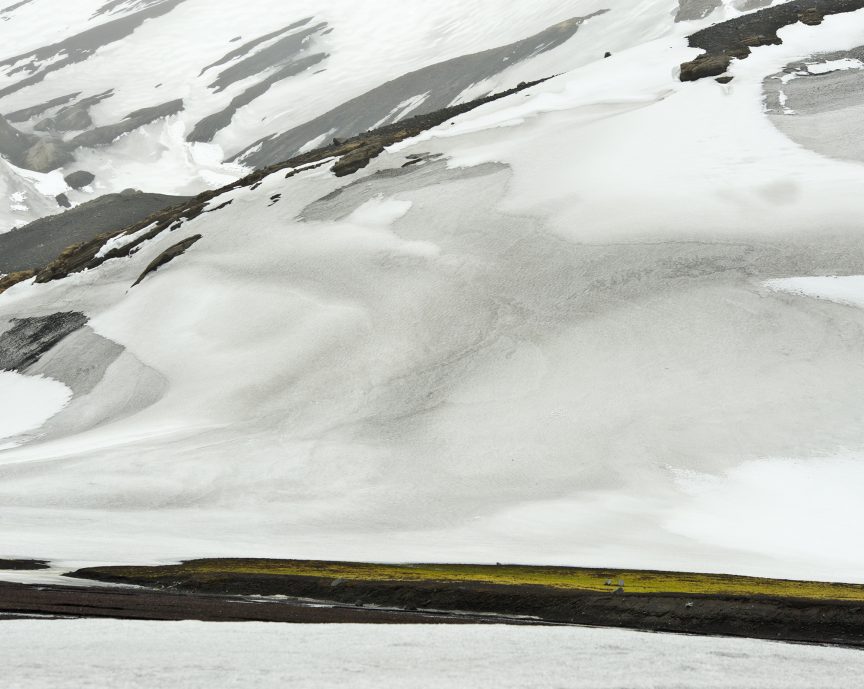“Simplify, simplify, simplify.” ~ Henry David Thoreau
“One ‘simplify’ would have sufficed.” ~ Ralph Waldo Emerson
It took me years to figure out that photographic composition is about organization of elements in the frame, that making a photograph has so much more to do with my decisions than it does with the scene in front of me.
Before that realization, I raised the camera to my face secure in my assumption that the subject of the scene was amazing enough to carry the photograph as long as I nailed my focus and exposure. I was OK with my photographs documenting what I saw, but had no idea that I was learning to speak a language that would allow me to interpret, and to comment upon, what I was seeing. And to do that I needed to compose intentionally.
Composition allows us to organize the photograph. My choice of lens, orientation of frame, where I place elements in that frame by my position relative to those elements (a little forward, to the left, or getting lower than) can change everything. It can make one thing important and another thing trivial, or vice versa. It can lead the eye into the frame or out of it. It can create a unified whole of the elements or make a jumbled mess of them.
Because how we think about something determines what we do with it, I have three ideas about composition and the power of simplicity that can change the way you think about your craft.
Intent is Everything
Without vision, there’s no starting point from which to make our decisions about how we compose. I know, I know—I’ve gone on about this before. But unless you have a sense of your vision or intent, or are open to discovering it through the process of making your images, then you will have no direction and no sense of whether your efforts at simplifying are getting you closer to, or further from, “adding the meaningful,” to quote designer John Maeda.
“Simplicity is about subtracting the obvious
and adding the meaningful.”
~ John Maeda
No one can do this for you, and it’s the hardest part of the art-making process. Making a choice. Being willing to try and fail and try again. Being willing, on some level, to be profoundly selfish about it: What do you want? What will please you? What do you want to say? How do you feel about this? Don’t look over your shoulder for the answers. Look within.
You. On some level art is first an act arising from the self. Only then can it be concerned about speaking to, engaging with, or pleasing others. The more clear you are about your intent, the more simplified (not simplistic) your vision, the fewer barriers you’ll have to contend with as you execute that vision.
Think About Unity
Photographers don’t often talk about harmony, but that’s one of the touchstones of good composition. Do all the elements work together to support the image? Is there one unifying idea or theme? These are helpful questions because the answers help determine what you can exclude. The result of not considering the idea of harmony is a chaotic image that supports no one idea, intent, or vision.
“Three rules of work:
out of clutter find simplicity.
From discord find harmony.
In the middle of difficulty lies opportunity.”
~ Albert Einstein
Making sure the elements all work together doesn’t mean having a boring image; it means being intentional about creating contrasts that support the main idea, or a rhythm created with elements like shapes or colours that maintains the harmony but also giving variety; that’s what rhythm is.
Think Simply
An image can really only support one idea or theme well. It may touch on others, but we work with a very limited medium and trying to do too much with a photograph will usually result in the image doing very little. It will be diluted, its potential power lost to too many elements. The eye can only take in so much and assign meaning to so many elements in an image: 2 or 3 is usually the real limit; the rest is background.
“Perfection is achieved, not when there is nothing more to add,
but when there is nothing left to take away.”
~ Antoine de Sainte Exupery
Look at the best images—the ones you love the most from the history of photography—and I think you’ll see most have only one main subject expressed through one key element, a secondary element, and very few tertiary elements. Generally speaking, the more you cram into the frame, the less power each of those elements will exert in the frame.
“The ability to simplify means to eliminate the unnecessary
so that the necessary may speak.”
~ Painter Hans Hofmann (1880-1966)
The take away? Simplicity is key. Identify your main idea and choose only as many elements as absolutely necessary to work in harmony and support or express that one main idea.
Find a way to cut the rest out. Be ruthless about it. There is power and elegance in simplicity.
Use whatever isolating device you need to do this to get me to the heart of the image in the simplest way possible, and your photographs will be more powerful than their cluttered, chaotic, or confusing alternate versions.
A few years ago I was in Oaxaca, Mexico photographing the Day of the Dead and there was a workshop group eating at a little restaurant we’d ducked into for dinner. At the end they all got up and headed for the door and suddenly out of nowhere this one woman says, way little too loudly: “And remember, your F should be 5!”
My friends and I all looked at each other. What? My F should be 5? Does my F even have a 5?
Photographers love prescriptions. We love guidelines and rules and platitudes. But when those little mental shortcuts prevent us from thinking, our photographs start to show it. I’ve tried hard to be a voice that encourages a little more creativity in our thinking toward how and why we make photographs.
My latest eBook, Your F Should Be 5 (And Other Platitudes) is a 200-page compilation of some of my best recent writing, giving you easy, anytime-and-anywhere, offline access to 50 thought-provoking articles to stir the paint, keep you focused, and remind you to think for yourself about the more important aspects of photographic craft and creativity. You can get Your F Should Be 5 at Craft & Vision for $18.
If you are not already doing so, would you prefer to get these articles by email as soon as they are published?
Share this Post.



Comments
I definitely struggle with the ability to simplify! Love this article.
Thanks for sharing this information. I will certainly visit your blog more often.
I’m personally a big fan of DavidduChemin blog. Thanks for sharing this post.
Great post-David. Here’s what I’ll add: “Sometimes, less is more.” – Murray Sye
Thanks for your inspiration. Whilst i was pondering about the F should be a 5, and what is could mean, i also thought about something i stumbled on when on the other day i was playing with some color profiles for my monitor. Trying to understand the color representation given in a 3D graph, looking like a thick shield-like shape, suddenly something showed itself in my imagination; i saw a photon speeding its way up through a lens and coming together with all of his happy friends forming an image somewhere on a sensor, loaded with color information and brightness. This photon must look like that thick shield-shaped color thing as it should have a big backpack to alter brightness and its color frequency along the way, and being super intelligent in some kind of way. Getting back to the F should be 5.. maybe a photon has more principles to ‘live’ by? Let us embrace the photon as our friend in photography. Just one second of my thought! 😀 Thank you mister duChemin for sharing your wisdom with us.
Kind regards,
Ronald
This is really a great post. As a new photographer, I am always following your blog.
Excelente post! Tenho lido sempre seus artigos e acho maravilho porque aprendo cada vez mais. Grata e sucesso sempre.
Great post! Thanks for the awesome advice. Your blog and photos are super amazing and inspiring!
Thank for your advice about the simplicity and unity in the frame. Almost ususally I think much of the theme and I often was frustrated the complexity of the phothgraph. Therefore I think phtography is difficult to me. But your education gives me confidence and courage to take pictures. Thank a lot.
Hi, David:
Thanks for sharing. I am working my way through ‘The Soul of the Camera’. Great education and refresher!
Read all your posts and buy your books starting from The Print and the Process recommended to me by Art Wolfe. Have learned much and improved greatly under your tutelage. Never took time to tell you so. Decided this was the day. Thank you from a duChemin believer. Now, off to simplify, simplify, simplify. No, think I will just simplify!
Hi Christina – Thank you for coming out of the woodwork and saying hello. The great surprise and joy of my life is sharing what I do with so many wonderful people. It’s less common than you might think to reach out and say hello or thank you. So thank you for that.
If you’ve ever got a question or idea that you’d like to see me address on my blog, don’t hesitate to reach out.
Thank you for your thoughts and impulses, David!
One of your best posts David.
Thank you, Shane!
SImplicity certainly is something to get right. It’s like a recipe – sometimes we try and do too much instead of let the ingredients speak for themselves. The same is true in photography. Let the image and objects do the talking and it’s my job to reflect them in the best light. Great post!
Thanks Jane!